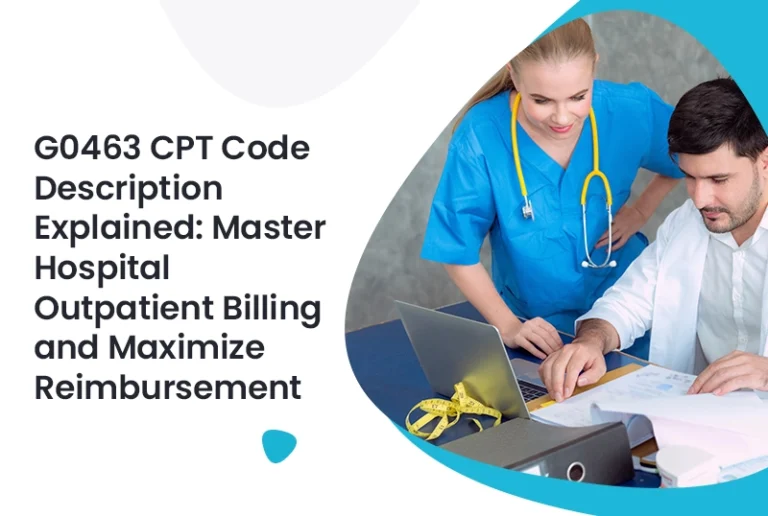Accurate coding lies at the heart of a healthy revenue cycle. Medical Coding Compliance sets the standard for ensuring that every code aligns with regulatory requirements, payer rules, and clinical documentation. When paired with a reliable medical billing service, providers can accelerate claim submission, slash denial rates, and safeguard practice revenue.
Understanding Medical Coding Compliance
Medical Coding Compliance is the systematic approach to assigning, verifying, and auditing diagnostic and procedural codes such as ICD-10, CPT®, and HCPCS that reflect the services rendered. Key components include:
- Regulatory Alignment: Following CMS, HIPAA, and OIG guidelines.
- Coding Accuracy: Matching codes precisely to clinical documentation.
- Documentation Integrity: Maintaining detailed physician notes and ancillary reports that justify each code.
Without a rigorous compliance framework, practices risk audits, recoupments, and reputational damage.
Why Compliance Matters: Financial, Clinical & Legal Impacts
- Financial Health
- Non-compliance can trigger chargebacks and penalties up to 3× the overpayment amount.
- Denial rates above 10% drive up administrative costs.
- Non-compliance can trigger chargebacks and penalties up to 3× the overpayment amount.
- Patient Care Continuity
- Accurate codes ensure correct patient records and billing transparency.
- Prevents care delays due to rejected claims.
- Accurate codes ensure correct patient records and billing transparency.
- Legal Risk Mitigation
- Strong compliance programs demonstrate good faith to regulators.
- Reduces exposure to False Claims Act lawsuits.
- Strong compliance programs demonstrate good faith to regulators.
By prioritizing compliance, organizations protect both bottom line and patient trust.
Want more information? Read here: 4 Things To Know About RPD in Medical Billing
Building a Compliance Framework
A solid Medical Coding Compliance program hinges on four pillars:
- Policies & Procedures
- Draft comprehensive coding policies, updated annually or with regulatory changes.
- Include payer-specific billing rules and escalation workflows.
- Draft comprehensive coding policies, updated annually or with regulatory changes.
- Education & Training
- Launch coder onboarding with interactive modules.
- Host quarterly workshops on recent coding updates and denial trends.
- Launch coder onboarding with interactive modules.
- Auditing & Monitoring
- Schedule internal peer reviews monthly and external audits quarterly.
- Track findings in a centralized corrective-action log.
- Schedule internal peer reviews monthly and external audits quarterly.
- Reporting & Analytics
- Leverage dashboards to monitor denial rates, audit error rates, and coder productivity.
- Use alerts to flag outlier patterns in real time.
- Leverage dashboards to monitor denial rates, audit error rates, and coder productivity.
Embedding these pillars into daily operations ensures sustained compliance and continuous improvement.
Leveraging Technology for Compliance
Modern tools can automate compliance checks and reduce manual errors:
- Computer-Assisted Coding (CAC): Suggests codes based on natural-language processing of clinical notes.
- Code-Scrubbing Software: Flags inappropriate code pairings, bundling errors, and missing modifiers.
- Audit Management Platforms: Automate audit scheduling, findings collection, and report generation.
- Analytics Engines: Identify high-risk providers, locations, and code sets for targeted interventions.
When integrated with your EHR, these technologies create a seamless ecosystem for real-time compliance validation.
Best Practices to Reinforce Compliance
Embrace these strategies to elevate your program:
- Routine Peer Reviews: Rotate coders through peer-review sessions to share knowledge and catch errors early.
- Centralized Resource Library: Host ICD-10 manuals, payer bulletins, and compliance newsletters in one portal.
- Data-Driven Decisions: Analyze denial reasons and audit trends to inform targeted training and policy updates.
- Leadership Engagement: Engage medical directors and executives succeeds when it’s a top-down priority.
By weaving compliance into your culture, you reduce risk and cultivate accountability.
Staff Training & Credentialing
Effective training dovetails with expert medical credentialing services:
- Certification Requirement: Ensure all coders hold CCS or CPC certification and maintain CEUs.
- Scenario-Based Workshops: Use real audit cases to illustrate common pitfalls like unbundling and upcoding.
- Ongoing Feedback: Deliver weekly scorecards and one-on-one coaching to reinforce best practices.
Credentialing alignment and continuous education empower staff to maintain high coding integrity.
Common Compliance Pitfalls & Mitigation
Even seasoned teams can slip into non-compliance. Watch for:
- Upcoding
- Issue: Inflating code severity for higher reimbursement.
- Solution: Random audits and automated scrubbers that detect atypical code patterns.
- Issue: Inflating code severity for higher reimbursement.
- Unbundling
- Issue: Billing separate codes for services that should be grouped.
- Solution: Configure scrubbers to flag unbundled services against NCCI edits.
- Issue: Billing separate codes for services that should be grouped.
- Incomplete Documentation
- Issue: Missing physician notes or diagnostic reports.
- Solution: Enforce chart documentation within 24 hours of service.
- Issue: Missing physician notes or diagnostic reports.
Proactive identification and targeted corrective actions keep denial rates in check.
Measuring Compliance Success
Track these KPIs to gauge program effectiveness:
| Metric | Goal |
| Claim Denial Rate | < 5 % |
| Audit Error Rate | < 2 % |
| First-Pass Clean Claim Rate | > 95 % |
| Average Days in A/R | < 30 days |
| Time to Audit Closure | < 10 days per audit cycle |
Regularly reviewing these metrics ensures you catch issues early and demonstrate ROI.
Future Trends in Coding Compliance
Stay ahead by monitoring emerging developments:
- AI-Driven Coding: Next-generation CAC that learns from coder edits to improve accuracy.
- Telehealth Coding Guidance: New CPT codes and modifiers for virtual services require rapid policy updates.
- Interoperability Standards: FHIR-based documentation exchange will reshape how coding data flows across systems.
- Value-Based Care Models: Bundled-payment programs demand precise episode-based coding and risk adjustment.
Adapting quickly to these trends safeguards compliance in a dynamic regulatory environment.
Conclusion
Embedding Medical Coding Compliance into your workflows not only shields your practice from audits and penalties but also strengthens patient trust and financial performance. When combined with robust healthcare revenue cycle management, you create an end-to-end process that balances accuracy, efficiency, and accountability. By leveraging clear policies, ongoing training, advanced technologies, and data-driven insights, your organization can achieve sustained compliance and thrive in an ever-evolving healthcare landscape.
Frequently Asked Questions (FAQs)
1. What core elements define Medical Coding Compliance?
It includes accurate code assignment, regulatory adherence (CMS, HIPAA, OIG), thorough documentation, and routine audits.
2. How often should audits occur?
Internal audits monthly, external audits quarterly adjust frequency based on findings and denial trends.
3. Can small practices afford a compliance program?
Yes. Begin with policy templates, free CMS resources, and peer reviews before scaling to paid tools.
4. How does real-time documentation support compliance?
Completing charts immediately after care ensures codes reflect true services and supports audit readiness.
5. What role does leadership play?
Medical directors and executives must champion compliance, allocate resources, and reinforce accountability.







